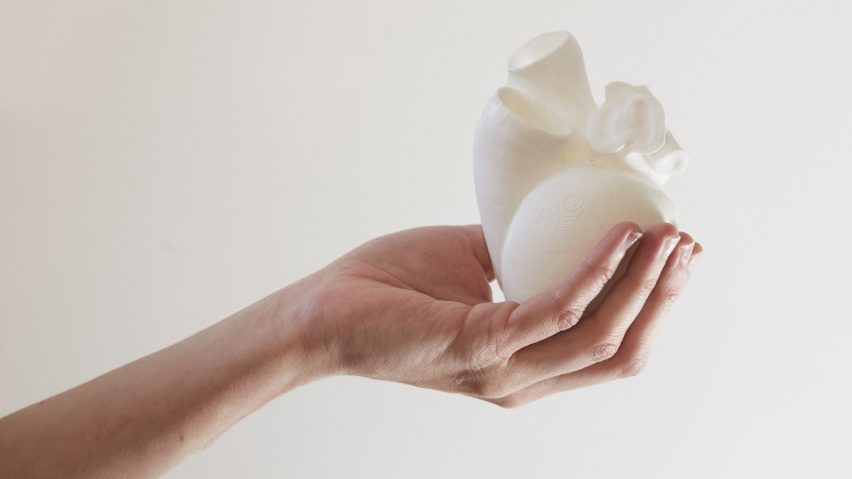
Personalised 3D-printed models of patients' hearts can be used to plan surgery
London-based design studio Cellule has devised a system for creating personalised digital and 3D-printed models of hearts, which can be used to help doctors plan surgery for transplant patients.
Initiated in September 2017, Big Heart Data explores the role of 3D printing and parametric modelisation in heart surgery, and its potential to create a customisable and personal healthcare system for individual patients.
By harnessing recent innovations in imaging and modelisation technologies, researchers and doctors can now see computational models and hold and 3D-printed models of their patients' unique and individual hearts.
In turn these models can be used to help develop new and personalised treatments for people with heart failure.
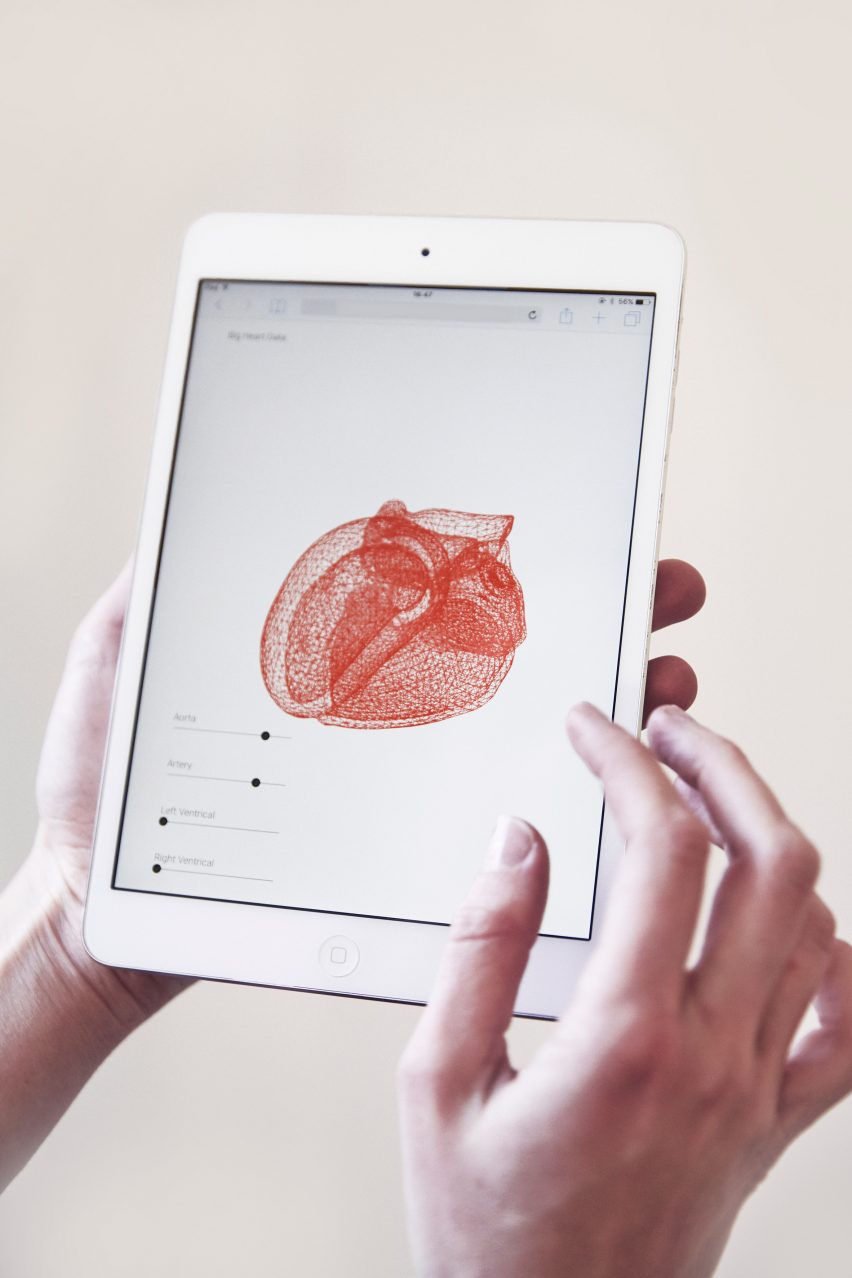
The speculative project is the result of a collaboration between Pablo Lamata from the Department of Biomedical Engineering at King's College London and designer Salomé Bazin who runs creative design studio Cellule.
"The project is based on our ongoing interest in cardiology, 3D printing and the changes we could foresee in a future healthcare system," Bazin told Dezeen.
"For the first time, we are able to use computer models to predict how effective different treatments will be, and new MRI techniques are being used to create 3D-printed anatomically correct models of individual patient's hearts for preoperative planning," she continued.
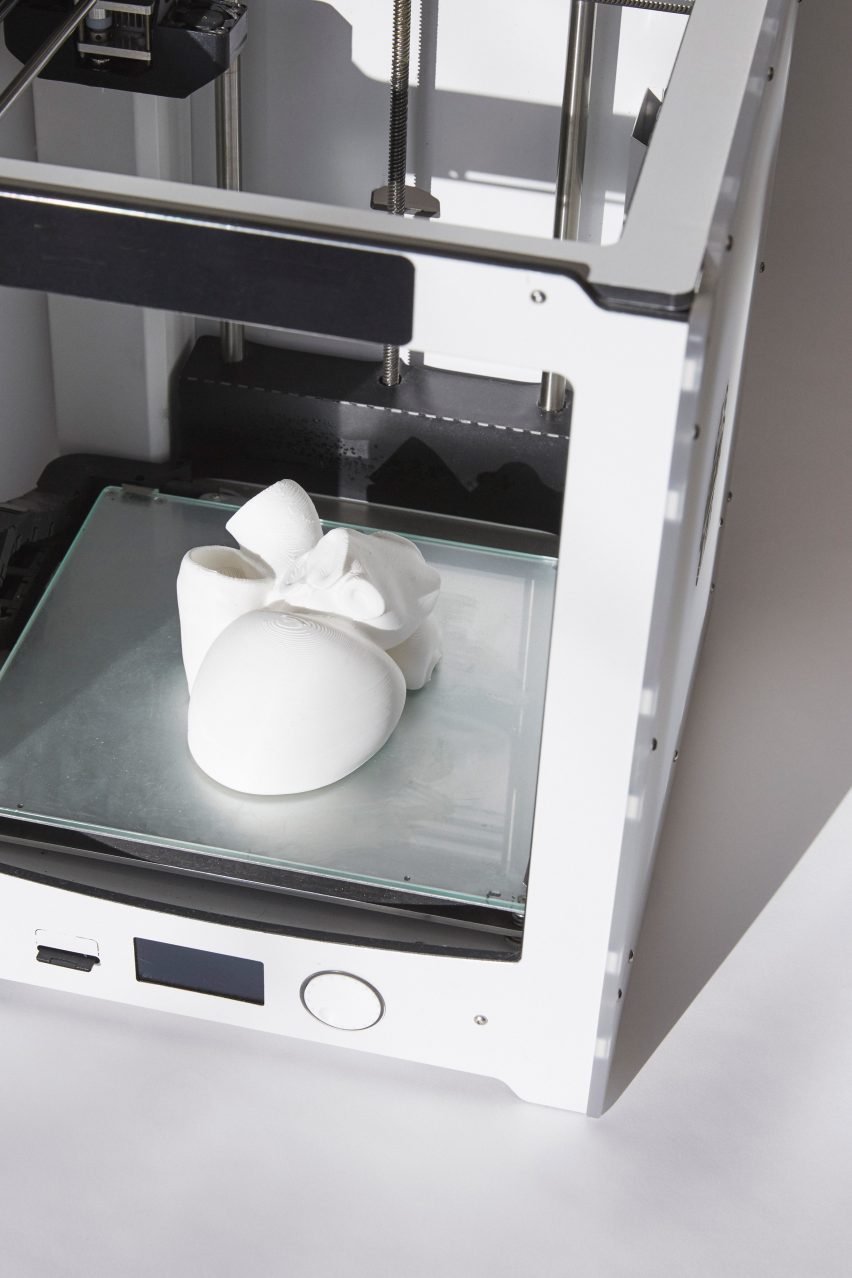
The hearts are printed using a renewable bio-based PLA plastic directly derived from sugarcane. The technology is based on ongoing research by scientists at the Wellcome Centre for Biomedical Engineering, who specialise in Cardiac computer modelisation.
"The combination of geometrical and computational models of the heart with 3D printing has the potential to allow for bespoke surgical and interventional devices," said Bazin.
"Cellule also see this technology as providing a unique opportunity for patients to have greater involvement in pre-operative planning, and consequentially to facilitate greater personalisation in healthcare."
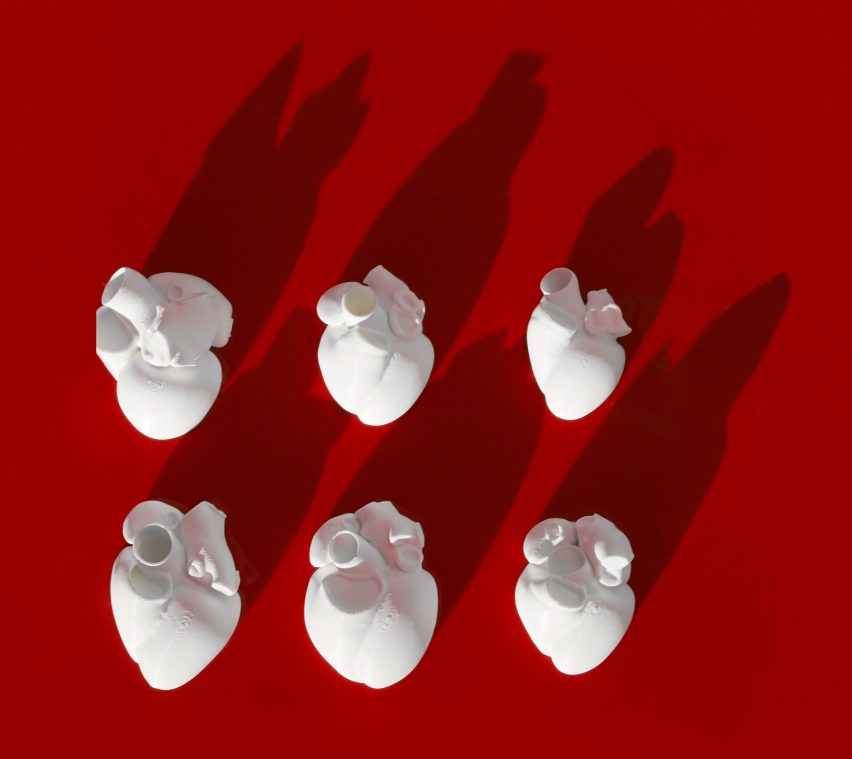
Taking this development a step further, computer scientists are developing algorithms and computer models to predict and visualise how the heart will grow and develop from birth to adulthood. This allows them to predict the impact of life conditions and premature birth.
"While it is strictly based on scientific research, the project itself is speculative, as we are looking at approximately ten years before this could potentially be a seamless technology accessible for all," said Bazin.
"Regarding the 3D printing side of things, the technology is available today and seamlessly working, we are partnering with a commercial company BatchWorks, who developed a streamline process for batch and affordable 3D printing."
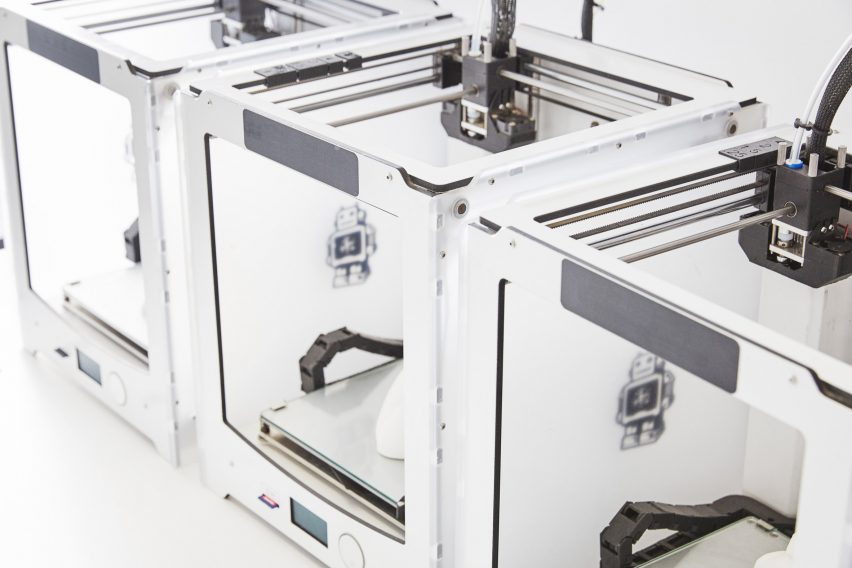
Commissioned by the Science Gallery at King’s College London and supported by the Centre for Medical Engineering also at King’s College London, the Big Heart Data project will be showcased as part of Spare Parts at Science Gallery London from February 2019.
"The project sets out to engage non-medical audiences with the latest research around cardiac modeling and surgical planning," said Bazin. "We want to invite people to participate in their own health care and understand their individuality, opening a discussion on what is possible and preferable for the future of health and surgery."
Last year Dezeen reported on an exhibition at Dutch Design Week that explored how designers could revolutionise the health sector by helping patients take greater control of treatments. Showcased at the Embassy of Health and curated by Sabine Wildevuur, the exhibition explored design-led solutions to problems such as inequality in access to healthcare and the global increase in chronic diseases.
Photography is by Gareth McKee.